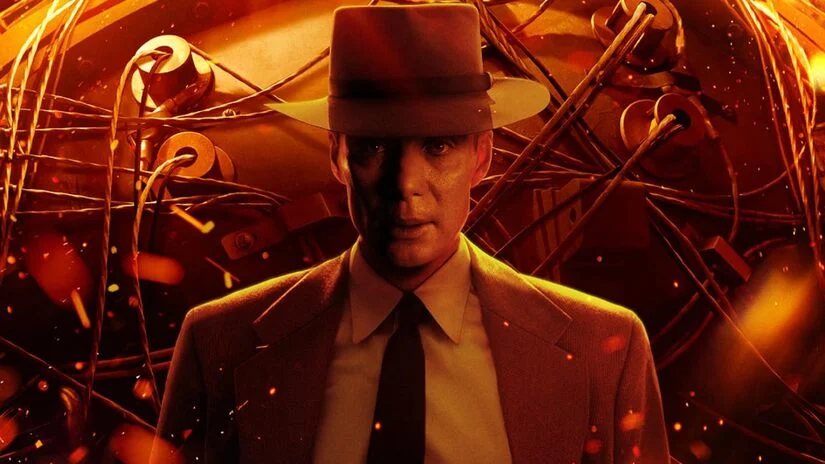Christopher Nolan’s Oppenheimer is a biographical drama built on towering ambition. Based on the Pulitzer Prize-winning biography American Prometheus by Kai Bird and Martin J. Sherwin, the film reconstructs the life of J.
Robert Oppenheimer, the theoretical physicist who led the Manhattan Project during World War II. But as with any adaptation of real-life events, the film blends historical fidelity with cinematic license.
The result is a movie that’s largely grounded in truth—but with some key embellishments, omissions, and dramatizations. Here’s a breakdown of what Oppenheimer gets right—and where it strays from the record.
What’s Accurate
1. Oppenheimer’s Central Role in the Manhattan Project
The film’s core story—the rise of J. Robert Oppenheimer as the head of the Los Alamos Laboratory and his leadership in developing the atomic bomb—is historically accurate. Oppenheimer was appointed scientific director of the Manhattan Project in 1942 and was instrumental in organizing a team of top scientists to carry out the unprecedented task of weaponizing nuclear fission. His contributions to quantum mechanics, despite being overshadowed later by political fallout, were foundational.
2. His Complex Political History
Nolan’s film does not shy away from Oppenheimer’s political entanglements. His associations with Communist Party members in the 1930s, including his brother Frank and his girlfriend Jean Tatlock, are portrayed with nuance. These associations later haunted him during the Red Scare, leading to a public hearing in 1954 that resulted in the revocation of his security clearance. The film correctly presents this as a central conflict in his post-war life.
3. The 1954 Security Hearing
The interrogation-style scenes depicting Oppenheimer’s security hearing are one of the most accurate elements in the movie. Nolan used transcripts from the hearing nearly verbatim. The atmosphere—claustrophobic, morally ambiguous, politically charged—is true to historical accounts. It was less a fair investigation than a character assassination fueled by Cold War paranoia and professional rivalries, especially with Atomic Energy Commission chairman Lewis Strauss.
4. The Trinity Test
The depiction of the Trinity test—the first detonation of a nuclear device in July 1945—is visually and emotionally intense in the film, and historically accurate in its major elements. Oppenheimer’s anxiety, the scientific uncertainty about whether the atmosphere might ignite, and his famous quote from the Bhagavad Gita, “Now I am become Death, the destroyer of worlds,” all align with documented history.
5. Oppenheimer’s Guilt and Ambivalence
The emotional tone of the movie captures the real Oppenheimer’s post-war transformation. After Hiroshima and Nagasaki, he became a vocal advocate for nuclear arms control. He warned against the hydrogen bomb and was increasingly isolated from the scientific and political elite. His growing sense of moral conflict, which the film explores deeply, is well-documented and historically credible.
What’s Not Accurate or Exaggerated
1. The Strauss-Oppenheimer Conflict Is Oversimplified
While it’s true that Lewis Strauss played a central role in Oppenheimer’s downfall, the film simplifies a broader and more systemic issue. The revocation of Oppenheimer’s clearance wasn’t just personal vendetta—it reflected deeper tensions between scientists and the military-industrial complex. By focusing so heavily on Strauss as a kind of villain, the film downplays the wider institutional forces that drove the purge of dissenting voices during the Cold War.
2. Jean Tatlock’s Death and Relationship
Jean Tatlock, Oppenheimer’s lover and a known Communist Party member, is portrayed as a tragic, troubled figure who died by suicide in 1944. While this is true, the film dramatizes their final encounter and her death in a way that leaves questions hanging. Some historians argue her death may have had political overtones, but there’s no concrete evidence of foul play. The film hints at this ambiguity, which creates dramatic tension but stretches historical restraint.
3. The “One-Man Genius” Narrative
Oppenheimer centers tightly on its title character, but in doing so, it underplays the collaborative nature of the Manhattan Project. Figures like General Leslie Groves, physicist Niels Bohr, and mathematician John von Neumann had enormous influence. While some of these characters appear in the film, their roles are downscaled, reinforcing the myth of the lone genius, a common trope in biopics.
4. Visual and Sonic Embellishments
Cinematic flair often takes precedence over realism in Nolan’s storytelling. For instance, the auditory silence following the Trinity explosion—while an effective artistic choice—doesn’t match what would have been experienced on-site. Similarly, surreal visual sequences, like Oppenheimer imagining atomic fire engulfing the world during applause, are not historical recreations but interpretive representations of his psychological state.
5. Fusion of Timelines and Events
To keep a brisk narrative pace, the film merges events and compresses timelines. Meetings, debates, and discussions that occurred over months or years are portrayed as singular, pivotal moments. This is standard filmmaking practice, but it can give a misleading sense of urgency or consensus around decisions that were far more complex and contentious.
Where the Film Stays Neutral—or Mysterious
Some elements of Oppenheimer’s life remain ambiguous in the historical record, and the film embraces that ambiguity rather than resolving it. His exact motives, personal contradictions, and emotional inner life are portrayed through suggestion rather than explanation. This includes his relationships, his beliefs about science and morality, and his eventual alienation. The result is a portrayal that feels emotionally honest, if not always factually airtight.
Final Verdict
Oppenheimer is not a documentary, but it’s far from pure fiction. It sticks close to the known historical framework, drawing heavily on American Prometheus and declassified transcripts. The film captures the spirit of Oppenheimer’s life—the ambition, the brilliance, the regret—even when it takes artistic license with the details. Where it bends the facts, it usually does so for thematic impact rather than distortion.
In short, Oppenheimer is about 80% historically accurate. It’s a compelling dramatization of a brilliant but tormented man, and a nation racing to invent something it could never fully control. As a historical film, it informs. As a work of cinema, it provokes. And in that intersection, it succeeds.
